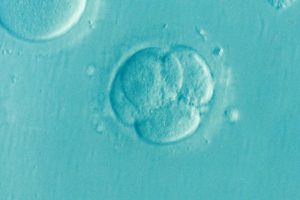
Ovulation Prediction Kits (OPKs)
Ovulation prediction kits (OPKs) are tests that analyze your levels of luteinizing hormone (LH) and are an effective way of narrowing down the timing of ovulation. There is a variety of OPK options that will help you time insemination, from regular pee stick tests to more advanced digital fertility monitors.
Although LH is always present in your body throughout your monthly cycle, your LH levels will increase the closer your body gets to ovulation and you will experience a peak LH surge about 24 to 36 hours prior to ovulation.
You will want to begin using OPKs around cycle day 10 (CD10). Most women experience their LH surge somewhere between CD12-18, but there are cases where women experience their LH surge earlier or later in their cycle.

The best way of using an OPK to monitor your LH surge:
- Drink fluids throughout the day, but don’t over-do it (fluids every couple of hours or so is fine)
- Void your bladder two hours prior to testing
- Test 3 times a day to make sure you don’t miss your surge (morning, afternoon and evening)
- Test around the same times each day
- Use an app that allows you to take a picture of the test results to help identify your peak surge
- Keep track of which CD your surge happens – having a record will help you be better prepared
Factors that can affect the accuracy of OPKs:
- Urine is too diluted
- Urine is too concentrated
- Time of day
- OPKs that are expired
It is also beneficial to use multiple methods of cycle tracking, including checking your cervical mucus (CM), basal body temperature (BBT) and using OPKs. With all three methods being used, you will improve your understanding of your monthly cycle and will be able to more accurately predict when your body will ovulate.
Once your body releases LH at its peak, a mature egg will be released within 24 to 36 hours to be fertilized. You will be able to confirm ovulation if you use a chart and basal body temperature thermometer to track your BBT (you can find a BBT chart to download here). Once your body releases an egg during ovulation, the egg will last approximately 12-24 hours before it begins to disintegrate. Sperm typically require 1 to 3 hours to move past the cervix and into the fallopian tubes. Ideally, you will have inseminated beforehand so the sperm have plenty of time to travel to the fallopian tubes and await the egg.
If you are using a known donor who is available for multiple inseminations: Once you have a positive LH surge (known as a “blazing positive”, the test is positive when the test line is as dark or darker than the control line), you will ideally want to inseminate 12 hours after your first positive, as well as 24 hours later if possible.
If you are using frozen donor sperm or your known donor is only able to inseminate once: You should inseminate around 24 hours after your blazing positive (unless you are working with a fertility clinic and your reproductive endocrinologist advises you differently).
Timing is crucial, since your egg will be released within 24 to 36 hours after you experiene an LH surge.
To help you track and better understand your monthly cycle, we have created a very handy pair of charts free for your use to download and print – it’s great for hole punching to keep in your daily planner (may need folding) or for your TTC journey journal!
Understanding Your Monthly Cycle
Cycle Tracking
Basal Body Temperature (BBT)
Cervical Mucus (CM)
» Ovulation Prediction Kits (OPKs)
The Two Week Wait
Understanding Your Monthly Cycle
Cycle Tracking
Basal Body Temperature (BBT)
Cervical Mucus (CM)
» Ovulation Prediction Kits (OPKs)
The Two Week Wait
Browse all Articles:
Trying to Conceive
Pregnancy
Motherhood
Self Care
SingleMomsByChoice.org is run by single moms by choice for single moms by choice, dedicated to helping educate, enlighten and empower women who are thinking about or who have decided to have a child “on their own” through donor insemination, egg or embryo donation, adoption or other assisted means.


